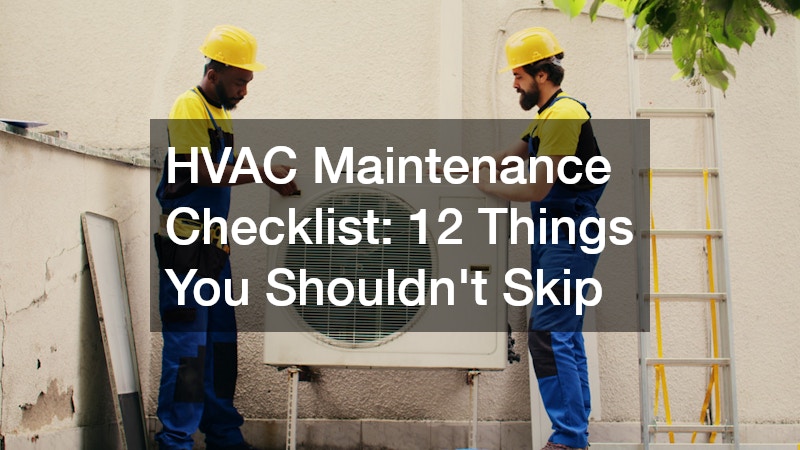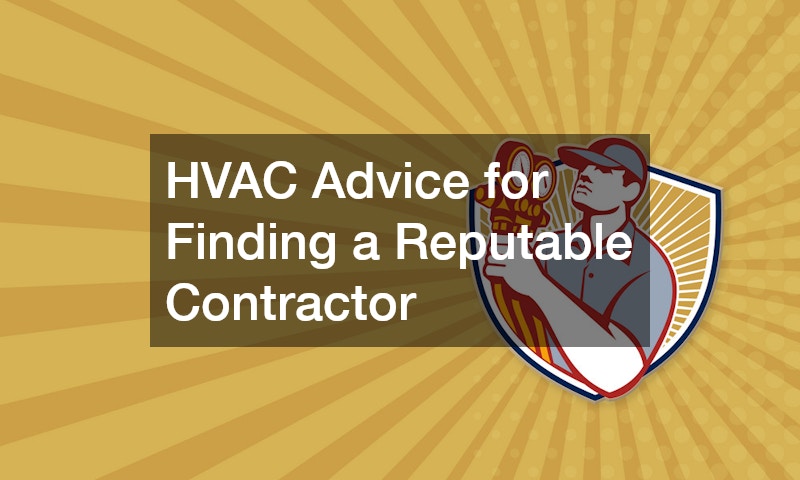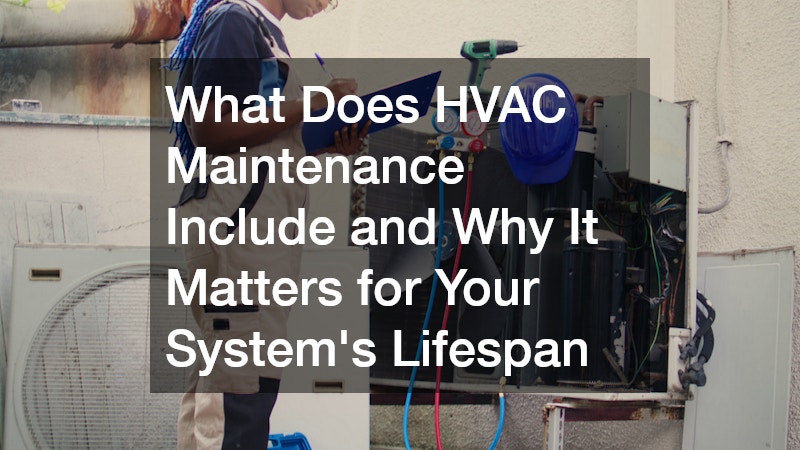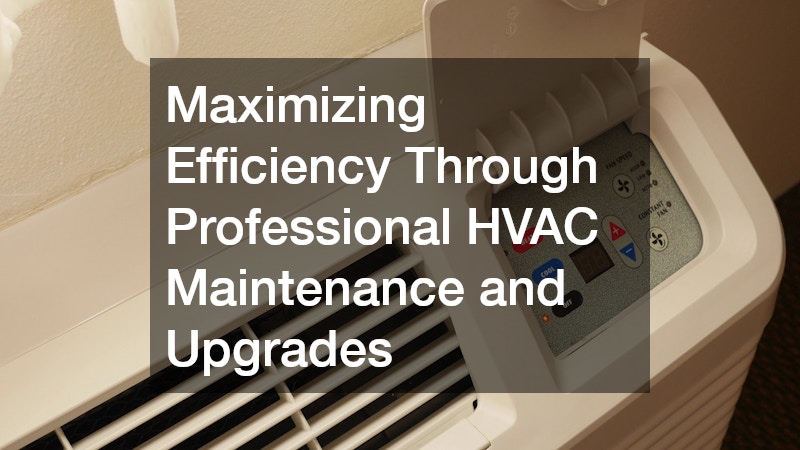As a homeowner, maintaining your HVAC system is one of the most important things you can do to keep your home comfortable and energy-efficient year-round. Yet, many people neglect routine HVAC maintenance until it’s too late—resulting in costly repairs, inefficient heating and cooling, or even complete system failure. That’s where a well-structured HVAC maintenance checklist comes in.
Whether you’re preparing for seasonal changes or simply doing your due diligence, understanding what tasks you shouldn’t skip can extend your system’s life, lower your utility bills, and give you peace of mind. In this guide, we’ll walk you through 12 essential HVAC maintenance tasks every homeowner should prioritize. From changing filters to scheduling professional inspections, each checklist item will help you avoid unnecessary headaches and keep your system running like new.
1. How Often Should You Check Your HVAC System?
Every HVAC system has different requirements, but as a general rule, you should inspect it at least twice a year—once before the summer cooling season and once before the winter heating season. Routine checkups help you detect minor issues before they become major problems.
Neglecting this step is one of the top reasons homeowners face unexpected breakdowns. By scheduling regular inspections or performing them yourself, you’re not just protecting your investment—you’re ensuring your family’s comfort.
Checklist Tips:
- Mark your calendar for spring and fall inspections.
- Follow your manufacturer’s service schedule.
- Don’t ignore odd smells or unusual noises—check immediately.
2. Change the Air Filter Regularly
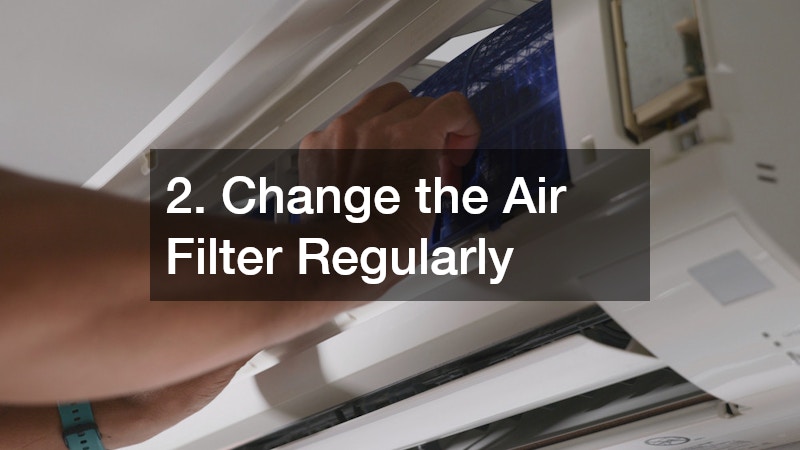
One of the easiest yet most overlooked tasks on any HVAC maintenance checklist is changing the air filter. A clogged or dirty filter can cause your system to work harder than it should, decreasing efficiency and indoor air quality.
A clean filter ensures good airflow, keeps your HVAC system from overworking, and traps allergens, dust, and other contaminants that would otherwise circulate through your home.
When to Replace:
- Every 1–3 months for standard filters.
- Monthly, if you have pets or allergies.
- Immediately, if the filter appears gray or dusty.
Pro Tip:
Use high-efficiency filters that match your HVAC model’s requirements, and always have a few spares on hand.
3. Inspect and Clean Air Vents and Registers
Over time, dust and debris accumulate in vents and registers, reducing airflow and making your HVAC system less effective. Dirty vents can also contribute to poor indoor air quality, especially for those with asthma or respiratory issues.
Make it a habit to inspect and clean these areas regularly. Not only will this improve air circulation, but it can also help your system maintain even temperature distribution throughout the home.
Checklist Tips:
- Use a vacuum with a brush attachment to clean vent covers.
- Check for obstructions like furniture or rugs.
- Make sure registers are fully open and not blocked.
4. Check and Clean the Condenser and Evaporator Coils
The condenser coil (located outside) and the evaporator coil (inside your HVAC unit) are critical components of your system. If these coils are dirty or clogged, they can reduce your system’s efficiency and lead to increased energy consumption.
Dirt, leaves, grass clippings, and other debris can obstruct airflow and damage the coils over time.
Maintenance Steps:
- Turn off the power before cleaning coils.
- Gently rinse the outdoor condenser coil with a garden hose.
- Use a coil cleaner or soft brush for tougher grime.
- Have a technician inspect coils annually during a tune-up.
5. Test the Thermostat and Replace Batteries
The thermostat acts as the brain of your HVAC system. If it’s not calibrated correctly, it can lead to temperature inconsistencies and energy waste. A malfunctioning thermostat might also cause your unit to short-cycle, which wears down the components faster.
Regular testing and battery replacement (if applicable) should be part of your HVAC maintenance checklist to ensure your system runs smoothly.
Checklist Tips:
- Check if the displayed temperature matches the room temperature.
- Replace batteries at least once a year (if non-wired).
- Consider upgrading to a smart thermostat for better energy savings.
6. Clear Debris Around the Outdoor Unit
The outdoor condenser unit needs plenty of space to “breathe.” If it’s surrounded by leaves, dirt, or plants, airflow can be obstructed, causing your system to work harder and overheat. This also increases your energy bills and can eventually lead to system failure.
Routine clearing of debris is a simple yet essential maintenance task you should never skip.
What to Do:
- Maintain at least 2 feet of clearance around the unit.
- Trim shrubs and plants regularly.
- Remove leaves, twigs, and grass clippings weekly.
7. Check the Condensate Drain Line
Your HVAC system’s drain line removes moisture collected during the cooling process. If this line gets clogged, it can lead to water leaks, mold growth, or even a system shutdown. Many homeowners don’t realize this component needs attention until they discover water pooling near their unit.
Steps to Maintain:
- Check for visible clogs or water buildup.
- Flush the drain with a mix of vinegar and water.
- Have a professional inspect it during annual service.
Warning Signs:
- Musty odors near vents.
- Unusual humidity levels indoors.
- Water stains around the indoor unit.
8. Lubricate Moving Parts and Inspect Belts
HVAC systems have numerous moving parts that need to work together efficiently. Over time, these components can wear out or lose lubrication, which increases friction and energy consumption. If left unchecked, it can lead to motor failure or belt snapping—both costly problems.
Part of any thorough HVAC maintenance checklist includes checking and lubricating these components.
Checklist Includes:
- Motors, fans, and blower assemblies.
- Belt tightness and signs of cracking.
- Use the lubricant recommended by the manufacturer.
9. Inspect Ductwork for Leaks and Blockages
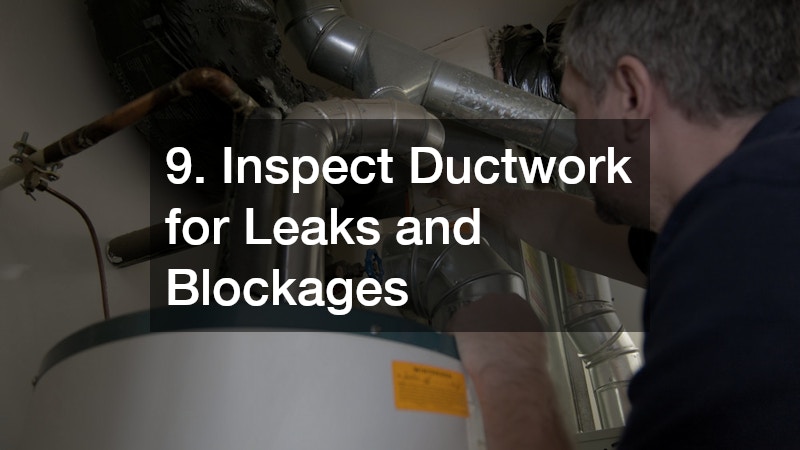
Leaky or poorly insulated ducts can reduce system efficiency by up to 30%, according to the U.S. Department of Energy. If your home feels unevenly heated or cooled, or your energy bills spike without explanation, the ductwork may be the culprit.
Duct inspections are often overlooked, but are a critical item on any homeowner’s HVAC checklist.
What to Look For:
- Whistling or hissing sounds from ducts.
- Dust buildup around vents.
- Visible tears or loose connections.
Fixes Include:
- Sealing with mastic or foil-backed tape.
- Insulating exposed ductwork in attics or crawlspaces.
- Hiring a professional for a full duct evaluation.
10. Schedule Annual Professional HVAC Maintenance
While many tasks on this checklist can be done by the homeowner, a certified HVAC technician can identify problems that aren’t visible to the untrained eye. Annual professional inspections are essential for keeping your HVAC system in peak condition and catching early signs of wear or potential failure.
An experienced technician will test refrigerant levels, inspect electrical components, calibrate thermostats, and clean internal parts that are difficult to reach.
What to Expect During a Visit:
- Full system diagnostic test.
- Safety inspection for gas leaks or carbon monoxide.
- Cleaning and fine-tuning for efficiency.
- Recommendations for repairs or upgrades.
Tip:
Sign up for a seasonal HVAC maintenance plan with your local provider to receive reminders and discounts.
Check for Unusual Noises or Odors from Your HVAC System
While some humming or light air movement sounds are normal, unusual noises—like rattling, screeching, or banging—can be signs of internal issues. Likewise, strange odors (burning, musty, or chemical-like smells) can signal everything from dust buildup to dangerous electrical problems or mold in your ducts.
These sensory cues should never be ignored. Addressing them early can prevent small mechanical faults from becoming major malfunctions.
Pay attention to these red flags:
- Rattling or clanking: Loose parts or motor issues.
- Burning smell: Electrical problems or overheating.
- Musty odor: Possible mold in the ductwork or condensate line.
- Screeching: Belt or blower motor issues.
If any of these symptoms persist, contact an HVAC technician for a system evaluation. This simple vigilance can prevent system failure and protect your home’s air quality.
12. Monitor Energy Bills for Sudden Spikes
If you notice your utility bills climbing without any major changes in how you use heating or cooling, your HVAC system might not be running efficiently. While some variation is normal during seasonal transitions, a noticeable or steady rise in energy costs often points to an issue—like a dirty filter, air duct leaks, or worn-out parts. These problems can force your system to work harder, using more energy than necessary.
Regularly reviewing your energy statements helps you catch inefficiencies early and address minor concerns before they lead to expensive repairs or excessive energy waste.
Keeping an eye on your monthly utility statement is a smart way to spot hidden HVAC problems.
If your energy bill rises unexpectedly, check:
- When the last filter was changed.
- If vents or ducts are blocked or leaking.
- Whether the thermostat is functioning properly.
- For signs of outdoor unit obstruction or debris.
Addressing these issues promptly helps restore efficiency, save on energy costs, and reduce wear on your HVAC system—further reinforcing the value of following your maintenance checklist.
Why Following an HVAC Maintenance Checklist Pays Off
Maintaining your HVAC system may feel like another chore, but the benefits far outweigh the effort. A consistent HVAC maintenance checklist helps prevent sudden breakdowns, improves indoor air quality, extends the life of your unit, and reduces your monthly energy bills. Moreover, well-maintained systems retain their manufacturer’s warranties, potentially saving you thousands in unexpected costs.
Here’s a quick recap of the 10 things you shouldn’t skip:
- Seasonal HVAC inspections
- Regular air filter changes
- Vent and register cleaning
- Coil maintenance
- Thermostat testing
- Outdoor unit clearance
- Condensate line check
- Moving parts lubrication
- Duct inspection
- Annual professional servicing
By incorporating these tasks into your home maintenance routine, you’re investing in your property’s comfort, safety, and value.
Conclusion
Your HVAC system works hard every day to keep your home comfortable—don’t take it for granted. Skipping routine maintenance may save time today, but it can cost you significantly down the road. This HVAC maintenance checklist is your tool to ensure that nothing gets overlooked. Whether you choose to handle some tasks yourself or call in the pros, staying proactive is key.
Now is the perfect time to evaluate your HVAC maintenance habits and make adjustments if needed. A little care goes a long way toward preventing breakdowns, saving money, and enjoying consistent indoor comfort.
